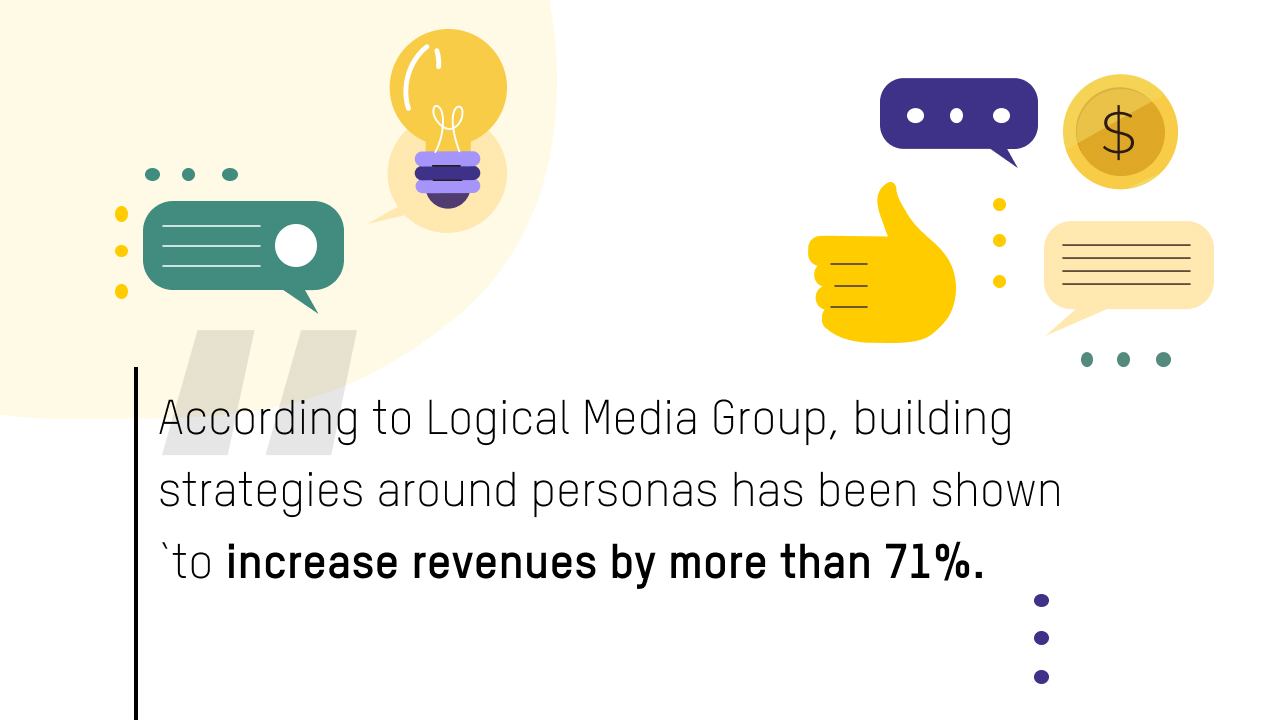Create campaigns with your target audience in mind to see a rise in conversions.
To see an increase in engagement, conversion, and consumer trust, it’s important to develop ads that are consumer-focused. By understanding your audience, you can build ads that connect with your consumers and bring maximum revenue to your business. So what does it mean to adopt an audience-centric approach?
Embracing an audience-centric approach means putting your target consumers at the forefront of your advertising strategies. This includes taking the time to understand them—their needs, demands, desires, and expectations—to build campaigns that are most relevant (and appealing) to them.
There are numerous ways to ensure your campaigns are more audience-centric. Here are a select few:
Build Strategies Around Personas
One of the most effective techniques for understanding your target consumers is through the use of personas. Personas are consumer profiles—created with user data—that represent a specific market segment. These sketches offer insights into consumers’ personalities, goals, motivations, and frustrations—all of which are critical to getting to know them on a deeper level.
According to Logical Media Group, building strategies around personas has been shown to increase revenues by more than 71%. This is because personas enable you to identify consumer needs and address them through tailored solutions, adding more value to your customer interactions.
How do you create personas? By using real consumer data. This can be done through traditional data collection methods, such as surveys and interviews, or with data collection tools and survey aggregators. Through this method, you get to gather demographic, firmographic, and behavioral data about consumers first-hand and use it to shape accurate representations of your target customers. You can also use analytics platforms like Google Analytics, Kissmetrics, and Hotjar to aid in the data collection.
Social media platforms have built-in analytics tools to gather important data about your audiences. You can also use your own customer database or contact lists to kickstart your research. In addition, there are numerous platforms and templates available online that can help you consolidate this information to support your strategies.

Understand Customers Across Touchpoints
Using an audience-centric approach includes understanding consumers and how they interact with campaigns across touchpoints. It’s important to find out how audiences see ads, instead of how you think they see them. This ensures that you’re able to communicate the right message to them and eventually get them to convert. This is where customer journey maps come into the picture.
Customer journey maps help you trace your customers’ steps, from the first point of interaction to the final stage of conversion. For example, this can begin from the moment they see an ad on Google (the awareness stage) to the moment they buy the product (purchase stage). In the process of building a customer journey map, you need to include important details like the actions they take and the emotions they feel as they travel down the conversion funnel.
Finding out user actions across touchpoints helps you discover the pain points they encounter along the way and gives you the chance to refine them. By using user journey maps, you’re putting your audience’s needs at the forefront. You get to build better, more seamless experiences for them and generate higher engagement and conversions as a result.
Sift Through Their Search Queries
Part of getting to know your audience and making sure your ads convert is conducting keyword research. Keyword research lets you know what information your consumers are looking for on search engines and helps you understand which terms bring the highest impressions, engagement, and conversions to your campaigns.
Furthermore, when conducting keyword research, you get to find out users’ search intent or the purpose for their queries. Search intent can either be informational, commercial, or transactional in nature, which can determine where your target customers are in the conversion funnel. Are they in the awareness stage (informational), consideration stage (commercial), or decision stage (transactional)? These insights can be useful when mapping out strategies to capture your target audience.
Indeed, this practice offers a different insight into consumers’ minds. Unlike personas and user journey maps, keyword research reveals the level of intent among target consumers in their buying journey—which is essential to paid ads. Knowing where they are on their buyer journey gives you the opportunity to form a strategy to craft your ads in a manner that can push them down the funnel. There are numerous tools you can use to analyze and select high-converting keywords—SEMRush, iSpionage, WordStream, and SpyFu to name a few.
Include Them in Testing
It’s almost imperative to involve your audience at every step in developing campaigns. This includes testing. Ad testing pertains to the process of showing your campaign to your target audience to get useful feedback from them. This gives you the chance to find out what works for your audience and what’s just causing leaks (before you even launch your campaign).
When conducting experiments on your ads, you just need to select the variables to be tested and the metrics to measure their performance. Get this in front of your chosen market segment and analyze their response. Part of this process is evaluating their feedback on copy, design, or messaging. Of course, whatever information you get from them is valuable in the development of your ads.



